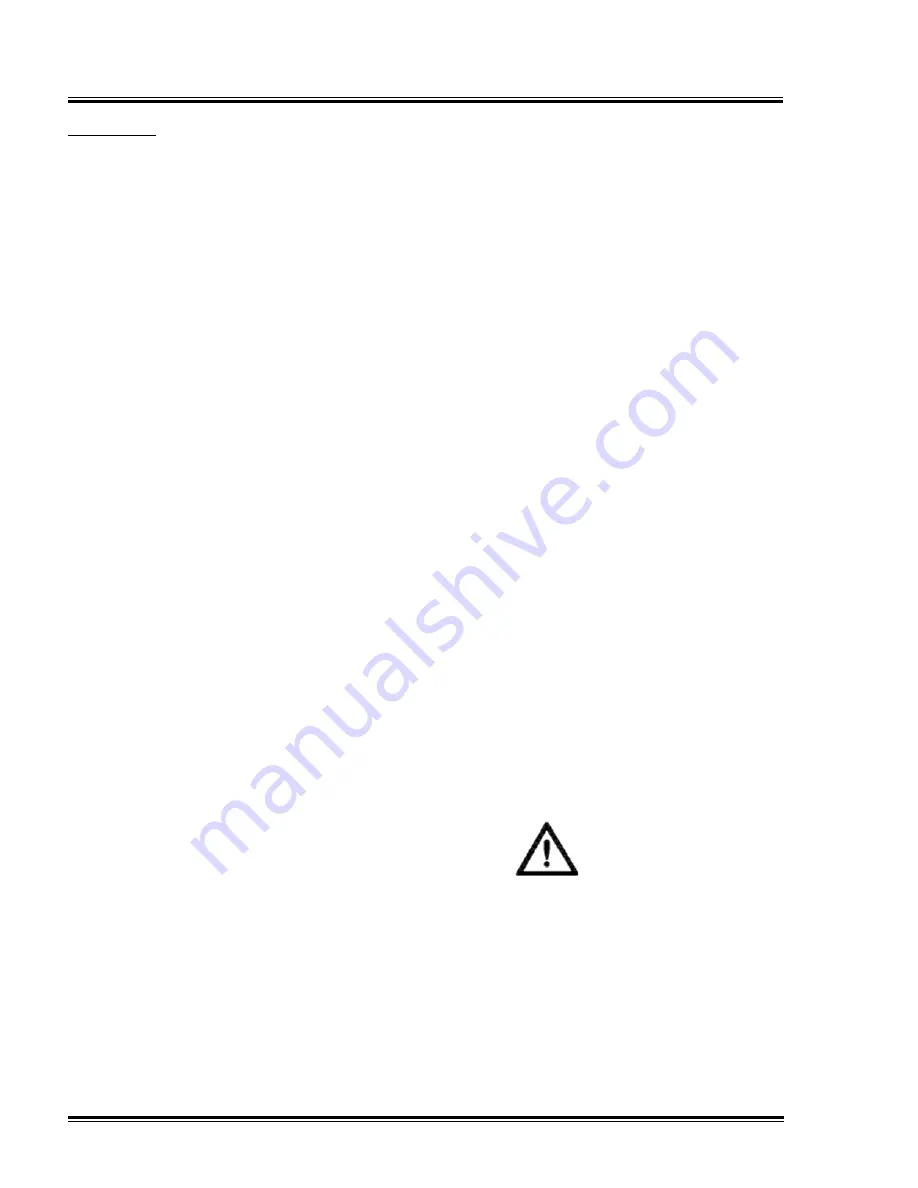
Section V - Servicing
Shaft Seal
Compressor shaft seals are wear
items that may eventually have to be
replaced. Special tools and a complete
understanding of the installation procedure
are required for a successful seal
replacement. Ask your Quincy distributor
for complete illustrated instructions
(available as a Service Alert) at the time
you order the seal and special tools, if you
decide to replace the seal yourself. If your
distributor does not have a copy of these
instructions, they can be ordered from
Quincy Compressor at no charge.
QGV compressors incorporate a fluid
scavenge system to complement the use
of a triple lip seal assembly. Any complaint
of shaft seal leakage requires that the
scavenge system be inspected for proper
operation prior to the replacement of the
shaft seal. Proper inspection consists of
the following:
• Assure that the scavenge line itself is
not plugged.
• Inspect the performance of the
scavenge line check valve by removing
the fitting located at the bottom of
the motor adapter. Remove the check
ball and inspect for wear. If the check
valve is stuck open, fluid can backflush
from the airend into the seal cavity and
appear as a leak. If the check valve
is stuck closed the seal cavity will not
scavenge. Replace if necessary.
• Remove the coupling guards and
coupling halves
• Remove the drive coupling hub and key
from the compressor shaft.
• Remove the drive motor.
• Remove the four bolts securing the seal
adapter to the suction housing.
• Insert two of the seal adapter retaining
bolts into the seal adapter jack holes
and turn clockwise (pushing the seal
adapter away from the suction housing).
• After the seal adapter outer o-ring has
cleared the seal adapter bore, remove
the adapter for inspection.
• Disassemble the seal adapter as
follows:
a. With the face of the seal adapter up,
insert two small, flat screwdrivers
under the outer lip of the fluid slinger
and pop the slinger from the seal
adapter bore.
b. Using a brass drift, tap the shaft seal
assembly from the seal bore.
c. Inspect both seal lips for excessive
wear, lip flaws or damage.
d. Inspect the outer o-ring on the fluid
slinger for cuts or nicks.
e. Inspect the outer o-ring on the seal
adapter for cuts and nicks.
f. Slide the wear sleeve removal tool
over the end of the shaft and allow
the jaws of the tool to snap on the
backside of the wear sleeve. Tighten
the outer shell of the tool down over
the inner jaws.
g. Using a ratchet and socket, turn the
puller jack screw clockwise in against
the end of the compressor shaft to
remove the seal wear sleeve.
Caution!
Do Not use an impact wrench with this
tool.
42
Quincy Compressor-QGV Series
Содержание QGV Series
Страница 2: ......
Страница 6: ......
Страница 17: ...Section II Description This page intentionally left blank Quincy Compressor QGV Series 11...
Страница 74: ...Appendix A Dimensional Drawings QGV 50 air cooled 68 Quincy Compressor QGV Series...
Страница 75: ...Appendix A Dimensional Drawings QGV 50 water cooled Quincy Compressor QGV Series 69...
Страница 76: ...Appendix A Dimensional Drawings QGV 75 100 air cooled 70 Quincy Compressor QGV Series...
Страница 77: ...Appendix A Dimensional Drawings QGV 75 100 water cooled Quincy Compressor QGV Series 71...
Страница 78: ...Appendix A Dimensional Drawings QGV 150 200 air cooled 72 Quincy Compressor QGV Series...
Страница 79: ...Appendix A Dimensional Drawings QGV 150 200 water cooled Quincy Compressor QGV Series 73...
Страница 89: ......






























